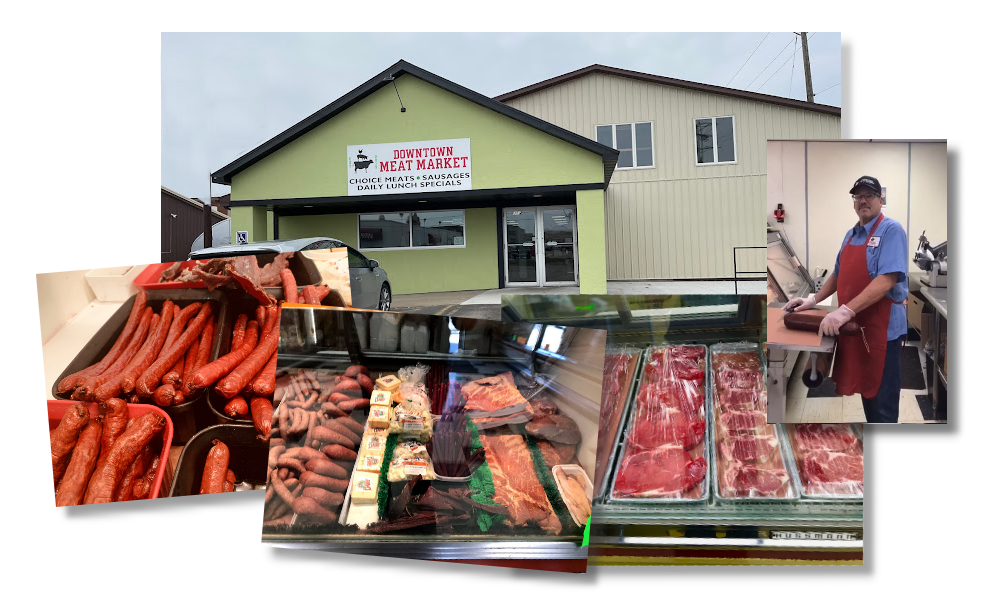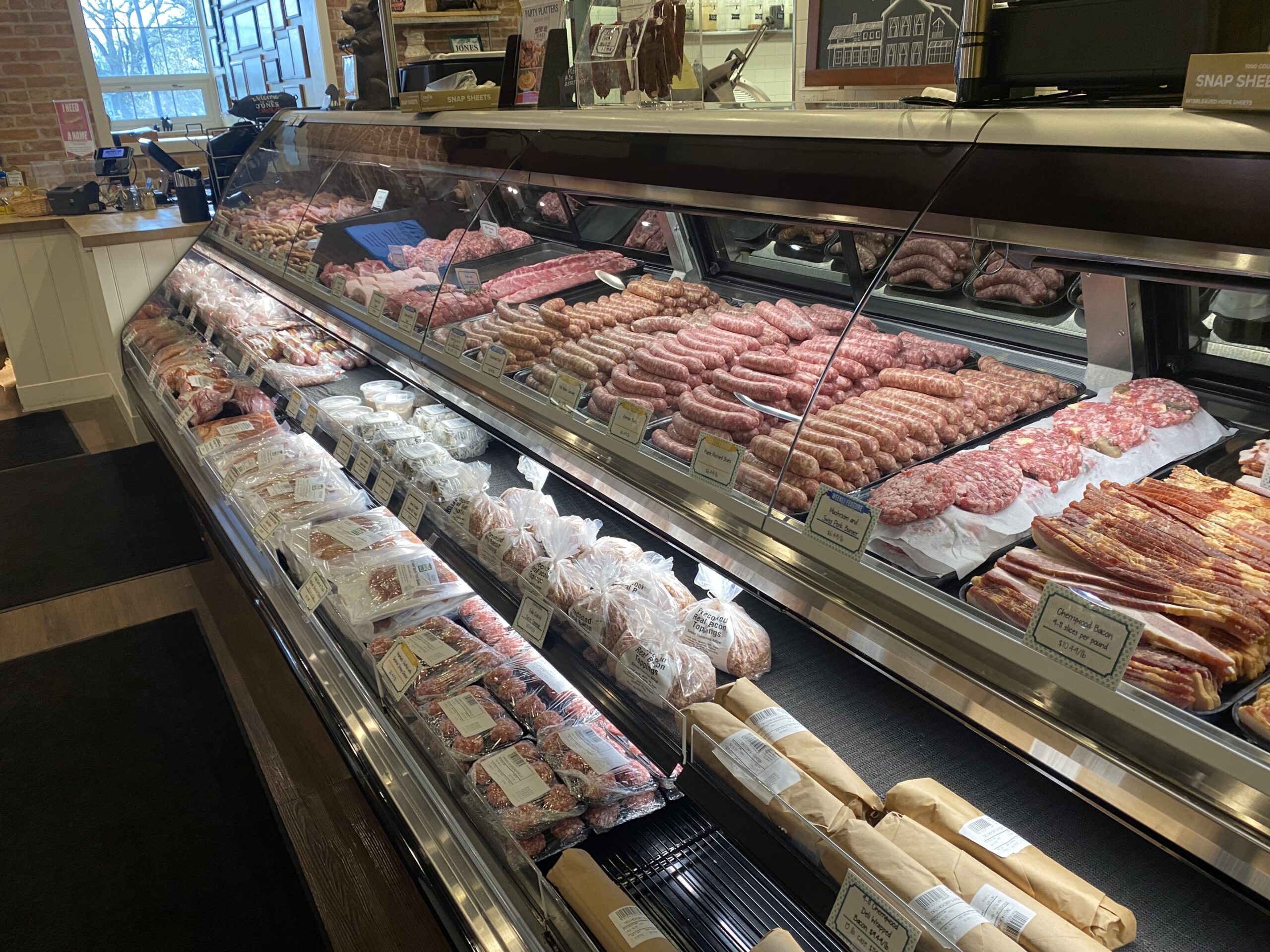What Makes Bagley Farms Meat Market Edwardsville IL Stand Out for Meat Lovers
What Makes Bagley Farms Meat Market Edwardsville IL Stand Out for Meat Lovers
Blog Article
Discover the Art of the Butcher's Cut in a Modern Meat Market
In the ever-evolving landscape of modern-day meat markets, the butcher's cut has transcended its standard origins, combining age-old workmanship with modern techniques. What truly sets the modern butcher apart is their ability to forge a deeper link between customers and the beginnings of their meat.
Advancement of Butchery Methods

The mid-20th century saw butchery methods additionally refined by scientific understandings into muscle mass biology and meat aging, improving both tenderness and preference. Advancements like vacuum packaging and refrigeration expanded product shelf-life, enabling butchers to branch out offerings and enhance high quality control. This period additionally noted the increase of customized tools, such as band saws and meat slicers, which raised accuracy and efficiency in meat processing.
The 21st century has actually presented digital modern technology into the butchery realm. Electronic systems currently aid in tracking animal provenance and optimizing cuts to fulfill particular customer preferences. Additionally, a resurgence in artisanal butchery has actually arised, blending conventional skills with modern expertise to satisfy customers seeking honest and sustainable meat alternatives. This evolution highlights a vibrant interplay in between custom and innovation, conference contemporary demands while preserving the craft's heritage.

Comprehending Meat Cuts

Comprehending the complexities of meat cuts is essential for both butchers and customers looking for quality and value. Each cut originates from a various part of the pet, passing on one-of-a-kind tastes, structures, and cooking methods. Mastery of these distinctions not only improves culinary experiences however likewise makes best use of the utility of each carcass. For butchers, accurate cuts mirror ability and regard for the craft, guaranteeing minimal waste and optimal return.
The main groups of meat cuts consist of primal, sub-primal, and retail cuts. Butchers then damage these down further right into sub-primal cuts, prior to ultimately producing retail cuts offered to customers, like ribeye or tenderloin.
Understanding muscular tissue composition is crucial; muscular tissues used a lot more often by the animal often tend to be harder and are best suited for sluggish cooking approaches, while less-used muscle mass, like those found in the loin, are more tender and ideal for grilling or roasting. Knowledge with these differences equips customers to make educated selections, enhancing their culinary undertakings.
Picking High Quality Meat
Picking the best meat entails even more than simply choosing an aesthetically appealing item from the display. The art of picking high quality meat calls for a critical eye and understanding of specific features that symbolize quality and excellence. Pay interest to the shade; beef must have an intense, cherry-red hue, while lamb ought to display a soft pink tone, and pork a light pink. This indicates the meat is fresh and hasn't been revealed to oxygen for as well long.
Second of all, consider the marbling, which describes the white flecks of fat within the muscle. Appropriate marbling is a key indicator of inflammation and taste, as it melts throughout food preparation, enhancing the meat's juiciness. Bear in mind, greater marbling frequently correlates with exceptional top quality cuts, such as USDA Prime.
Structure is an additional important factor; meat must feel solid to the touch, not slimy or extremely soft. Furthermore, bear in mind the scent. Fresh meat should have a tidy, neutral smell, without any sour or off-putting Check This Out smells.
Pairing Cuts With Cooking Techniques
Effectively matching cuts of meat with the ideal cooking techniques is essential for attaining optimum taste and appearance. These techniques enhance the meat's all-natural tastes and make sure a juicy coating.
Conversely, harder cuts like brisket and chuck roast are rich in collagen, which damages down into gelatin when prepared gradually. These cuts are perfect for braising or sluggish roasting, permitting the meat to tenderize with time and create deep, complicated tastes. Cuts such as brief ribs and pork shoulder get on well with slow-cooking approaches, where prolonged cooking times transform their robust textures learn the facts here now into succulent meals.
Lamb shanks and oxtail, which need extended food preparation to tenderize, are ideal prospects for stewing or slow-moving simmering. These techniques coax out rich, passionate tastes while maintaining dampness. By recognizing the special attributes of each cut, cooks and home cooks alike can boost their cooking productions, making certain each dish is both pleasing and remarkable.
The Butcher's Duty Today
Navigating the evolving landscape of the contemporary meat market, the butcher's function today extends beyond plain prep work of cuts. Contemporary butchers are cooking artisans, educators, and supporters for lasting methods.
Along with crafting precise cuts, butchers now involve directly with clients, using cooking recommendations and tailoring selections to match individual needs and choices. Their know-how in meat aging, marbling, and taste profiles empowers customers to make informed decisions, boosting their cooking experiences. This tailored solution exemplifies the butcher's developing function as a trusted advisor in the kitchen area.
Furthermore, butchers are crucial in reducing waste, utilizing entire pets to develop varied products such as sausages and stocks - bagley farms meat market edwardsville il. This extensive method not only respects the pet but likewise lines up with modern sustainability objectives. By doing this, the modern-day butcher personifies both custom and technology, adjusting to an ever-changing market while maintaining the creativity and honesty of their craft

Verdict
The contemporary butcher's craft elaborately weaves typical methods with modern innovations, emphasizing sustainable practices and moral sourcing. Proficiency in comprehending varied meat cuts and top quality indications have a peek at these guys empowers butchers to supply informed recommendations, aligning certain cuts with optimal food preparation techniques. This expertise not just elevates culinary experiences but likewise enhances the link in between consumers and the beginnings of their food. By recognizing historical techniques while accepting contemporary needs, the butcher's function continues to be crucial in today's sophisticated meat market.
Report this page